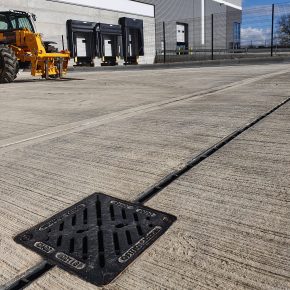
Design challenges facing education architectural practice
The pre-recession Building Schools for the Future (BSF) years were a catalyst for design innovation in the education sector. Challenged to create environments that are inclusive, inspirational and sustainable, architects were able to access the budgets needed to design next generation spaces for future generations of students. That BSF golden age is behind us but the education sector remains extremely busy. The advent of free schools, the growth of academies and the urgent need to provide additional school places across both the primary and secondary sectors means that there are lots of projects on site and in planning but the tight budgets and time-critical delivery parameters that now characterise the sector call for more design ingenuity than ever.
Creating capacity
The pressure on school buildings is particularly acute in the primary sector. While the Department of Education has stated that £5bn has been spent on funding new school places since the last general election, local authorities are still struggling to keep up with demand. According to the Local Government Association, 90,000 new primary places were created last year but another 130,000 will be required over the next three years to keep pace with the birth rate. Other factors are also affecting development of primary school buildings.
Modular buildings and off-site prefabrication offer alternative options
The introduction of free school meals for all foundation and Key Stage 1 children from September and changes in the curriculum to introduce computer skills for Key Stage 1 children mean that many schools need larger accommodation that incorporates new facilities. The secondary school sector faces similar capacity challenges. The latest Local Government Association figures predict that 49 out of 152 local authorities will have more secondary students than school places by 2019/20 and the association estimates that 80,716 new places will be required by that academic year. The results of this school capacity crisis are already being felt by the education sector and are affecting school design. Class sizes are larger and so are schools, with many primaries now being constructed or extended to accommodate three-form entry. What’s more, the use of temporary accommodation has become commonplace with schools being forced to provide new places due to the level of demand without the infrastructure in place to support them.
Creative challenges
So what does all of this mean for architects and specifiers? In a nutshell, it means that we must apply more holistic, solutions-driven thinking to address the immediate priorities within the available budget. The challenge is to provide that additional accommodation in a time and cost-effective manner without sacrificing any of the guiding principles that should also apply to all school buildings sustainability, energy efficiency, practicality, safety and comfort. To achieve all of that, flexibility must be a key element of the spaces we design.
Designing educational buildings can be tough when faced with a tight budget
This is a time of significant change for the education sector and we must be aware that change is an ongoing process, so designing scalable spaces that can be reconfigured easily to accommodate changes in class size, use, technology and curriculum is essential. To an extent, this has to mean that the inspirational designs of the BSF era are no longer viable because space must be more functional than visual. However, creative design can build aesthetics into functional spaces and we must not lose sight of the need to engage and inspire. We must also maintain sustainability as a key priority.
While the budgets for eco-bling may no longer be available, architects need to think creatively about cost-effective ways to improve thermal performance with more airtight designs and features such as brise soleil. They must also take a holistic approach to justifying the business case for renewable energy with accurate payback period and feed-in tariff financials.
Finally, let’s not forget that this is a sector that operates within a strict and immoveable timetable. The September intake has always been a factor in designing programmes for school projects and that was largely in the hands of the contractor. With the added pressure of school place shortages, the architect too must consider construction and installation times for every element of the specification, which could include modular buildings, off-site prefabrication and fast install fixtures and finishes.
Latest news

10th May 2024
Glidevale Protect strengthens technical service with senior appointment
Glidevale Protect has promoted Jim Smith to head of technical, to continue to drive its programme of product innovation in the development of energy efficient construction and roofing products.
Posted in Articles, Building Industry News, Building Products & Structures, Building Services, Facility Management & Building Services, Insulation, Membranes, Recruitment, Restoration & Refurbishment, Retrofit & Renovation, Roofs, Sustainability & Energy Efficiency, Walls
10th May 2024
Main Stage line-up revealed for Digital Construction Week 2024
With Digital Construction Week (DCW) rapidly approaching, the event organisers have revealed a must-see programme for the Main Stage of this year’s show.
Posted in Articles, Building Industry Events, Building Industry News, Building Products & Structures, Building Services, Exhibitions and Conferences, Information Technology, Innovations & New Products, news, Posts, Seminars
9th May 2024
AWMS: Gatic drainage solutions chosen for ambitious ‘futureproof’ logistics facility
Ascent Logistics Park is a sustainable construction project situated in one of the UK’s newly recognised industry hotspots – Gatic CastSlot and Gatic Kerbdrain from AWMS were specified there.
Posted in Articles, Building Industry News, Building Products & Structures, Building Services, Case Studies, Civil Engineering, Concrete, Cement, Admixtures, Drainage, Drainage Services, Drainage, Guttering, Soffits & Fascias, Facility Management & Building Services, Hard Landscaping & Walkways, Landscaping, Plumbing, Posts, Restoration & Refurbishment, Retrofit & Renovation
9th May 2024
DensDeck: How can you reduce the risk of solar panel roof fires?
To reduce the risk of a solar panel flat roof fire, measures should be taken to prevent electrical arcing, as this is the major factor that could cause an outbreak of fire. DensDeck explains more…
Posted in Articles, Building Industry News, Building Products & Structures, Building Services, Facility Management & Building Services, Health & Safety, Posts, Restoration & Refurbishment, Retrofit & Renovation, Roofs, Security and Fire Protection, Site Preparation, Sustainability & Energy Efficiency
 Sign up:
Sign up: